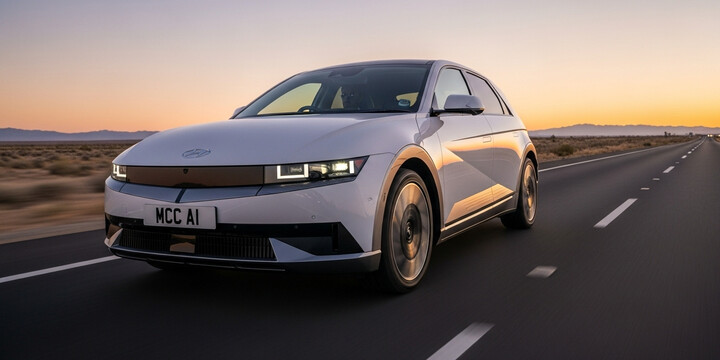
HYUNDAI IONIQ 5 (2024-) 5DR HATCHBACK 0.0 ELECTRIC 84KWH 228 N LINE AUTO
The HYUNDAI IONIQ 5 (2024-) 5DR HATCHBACK 0.0 ELECTRIC 84KWH 228 N LINE AUTO is an innovative electric hatchback designed for modern drivers in the UK seeking a stylish, eco-friendly vehicle. As a fully electric car, it offers zero emissions and impressive range, making it an ideal choice for environmentally conscious commuters, city drivers, and small families looking for a practical yet distinctive car. The IONIQ 5's sleek hatchback design combines cutting-edge technology with spaciousness, ensuring a comfortable driving experience while standing out on the road.
What sets the IONIQ 5 apart in its class are its advanced features, modern aesthetic, and exceptional reliability. With a sizeable 84kWh battery, it delivers a smooth and quiet journey, perfect for daily errands, longer trips, or eco-friendly city commuting. Its reputation for innovation and comfort makes it a popular choice among new drivers and those upgrading to electric vehicles. In comparison to rival models, the Hyundai IONIQ 5 (2024-) 5DR HATCHBACK stands out for its contemporary design, high-quality build, and user-friendly technology. If you're considering a used electric car that's reliable, stylish, and forward-thinking, the Hyundai IONIQ 5 is definitely worth a closer look.

average use

The data indicates that all recorded vehicles of the Hyundai Ioniq 5 (2024 model) in our sample have a mileage of 0 to 10,000 miles, representing 100% of the data. This suggests that these vehicles are very new or have recently been registered, with no records of higher mileage entries. It highlights the vehicle's low mileage profile, which could be appealing to prospective buyers seeking nearly new electric cars.

vehicle values

The data indicates that the majority of private sale valuations for the Hyundai Ioniq 5 (2024-) 5DR Hatchback, 0.0 Electric 84kWh 228 N Line Auto, fall within the £29,000 to £33,000 range. Specifically, 35.3% of valuations are between £30,000 and £31,000, while 23.5% are between £29,000 and £30,000, and 17.6% each for the £32,000 to £33,000 and £31,000 to £32,000 brackets. A smaller proportion, 5.9%, are valued between £33,000 and £34,000. These figures suggest that most private sale values cluster around the £29,000 to £33,000 range, with a notable concentration near the £30,000 to £31,000 mark.

production years

The data indicates that among the sample of Hyundai Ioniq 5 vehicles, the majority were manufactured in 2025, accounting for approximately 64.7%. A smaller yet significant portion, about 35.3%, were produced in 2024. This suggests a relatively recent shift in manufacturing towards the 2025 model year, which could be indicative of newer stock being more prevalent in the market.

colour popularity

The data indicates that the most common main paint colour for the Hyundai Ioniq 5 (2024 model) hatchback is grey, accounting for 41.2% of the vehicles sampled. White is also popular, comprising 29.4%, followed by red at 23.5%. Black is quite rarely chosen, with only 5.9% of the vehicles. This suggests a preference among buyers for neutral and versatile colours like grey and white, with red also being a notable choice, while black remains relatively uncommon.

ownership cycle

The data indicates that the vast majority of Hyundai Ioniq 5 (2024-) 5DR Hatchback Electric vehicles with an 84kWh battery are registered to a single keeper, accounting for 94.1% of the sample. Only a small portion, 5.9%, have had more than one registered keeper. This suggests that most of these vehicles tend to stay with their initial owners for an extended period, which could imply strong owner satisfaction or less frequent reselling.

engine choices

The data indicates that all Hyundai Ioniq 5 (2024-) 5DR Hatchback models with the specified details are purely electric vehicles, with no available information on engine capacity. This suggests that the model is exclusively powered by electricity, consistent with its categorization as an electric vehicle, and reflects the shift towards fully electric powertrains in this model. The absence of engine capacity data is typical for electric cars, which do not have traditional engines.












